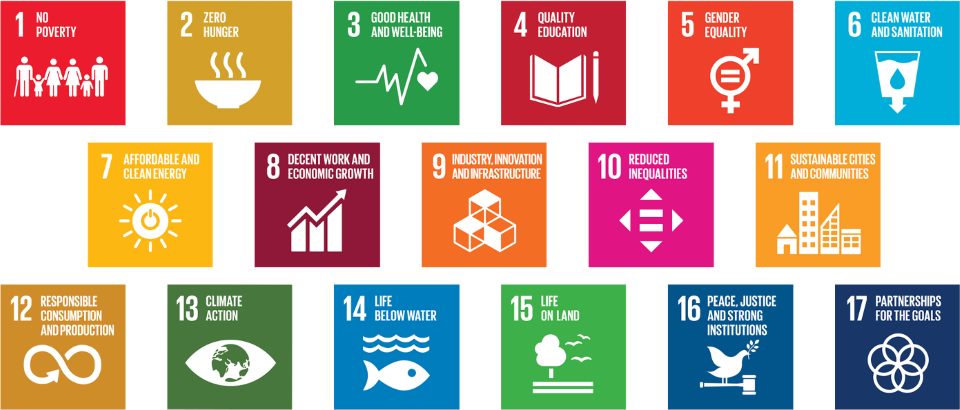Connecting social justice to the UN SDGs
The SDGs include a strong focus on all three types of sustainability (economic, social, and environmental). As a result, the SDGs can be easily viewed through a social equity and social justice lens. Let’s take a closer look:

Many of the SDGs are a direct call for social equity and social justice, including:
- #1 – No poverty
- #2 – Zero hunger
- #3 – Good health and well-being
- #4 – Quality education
- #5 – Gender equality
- #6 – Clean water and sanitation
- #7 – Affordable and clean energy
- #8 – Decent work and economic growth
- #10 – Reduced inequalities
Some of these are quite straightforward, stating directly that no one should live in poverty, go hungry, or lack access to healthcare or education. Further to this, everyone should have access to clean water and sanitation, affordable energy, and fair work. SDGs #5 and #10 address reducing inequality directly.
Other SDGs are necessary to support the health and well-being of all people and communities:
- #9 – Industry, innovation, and infrastructure
- #11 – Sustainable cities and communities
- #12 – Responsible consumption and production
- #13 – Climate action
- #14 – Life below water
- #15 – Life on land
- #16 – Peace, justice and strong institutions
These SDGs connect in various ways to supporting the goals of those outlined above, essentially contributing to the development of strong, healthy communities that support equal access for all to the basic needs of a healthy human life.
Finally, SDG #17, Partnerships for the goals, captures the need for cooperation, long-term thinking and planning, and an inclusive, wide lens on addressing sustainability and social justice issues.
Focus on: Climate justice
What is climate justice?
Climate justice is a specific field of social justice that looks at climate-related expressions of racism and inequality and calls for changes in the structures that cause these problems. Climate justice recognizes that those least responsible for climate change, like Indigenous people and the global poor, are also those who are most vulnerable to its effects.
How can we achieve climate justice?
From discussions by the United Nations Framework Convention on Climate Change (UNFCCC), climate justice is only likely to be achieved when industrialized countries:
- Fully acknowledge the costs and victim of climate change.
- Reduce greenhouse gas emissions.
- Provide financial support for the most vulnerable countries to pursue low carbon development strategies.
- Ensure knowledge transfer, especially to poorer countries.
- Reinforce human rights.
- Hold corporations and industries accountable.
“Climate change is a result of the greatest market failure the world has seen. Those who damage others by emitting greenhouse gases generally do not pay.”
- Lord Nicholas Stern, professor at London School of Economics, past chief economist for the World Bank
Social justice and sustainability: Exploration activity
Once you have completed the activity, consider the following questions:
- How did the situation impact (either positively or negatively) different SDGs?
- Would you support the development of the mine within the described community? Why or why not?
This work is licensed under a Creative Commons Attribution-NonCommercial 4.0 International License.

